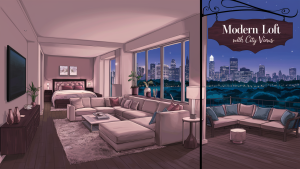
Airbnb Guest: A Host’s Guide to a Memorable Start
Facebook Twitter LinkedIn Reddit Email WhatsApp Welcome Your First Guest on Airbnb: A Host’s Guide to a Memorable Start Welcoming your first guest on Airbnb
In the world of real estate and finance, timing is everything. Often, homeowners or investors find themselves in a situation where they need to buy a new property before selling their current one. This can create a cash flow gap, where the funds tied up in the existing property are needed for the down payment or purchase of the new one. Enter the bridge loan—a financial tool designed to bridge that gap.
Is a short-term financing option that allows individuals or businesses to meet their immediate financial obligations while waiting for longer-term financing or the sale of an existing property. Typically, these loans are secured by the existing property, providing quick access to capital. The term “bridge” aptly describes its function: it bridges the financial gap between two transactions, like selling one property and purchasing another.
Are generally short-term, ranging from six months to a year.
Here’s how a typical bridge loan scenario might play out:
1. You find your dream home: You’ve located a new property that you want to buy, but your current home hasn’t sold yet.
2. You apply for a bridge loan: The lender offers a loan based on the equity in your current home. This provides you with the necessary funds to make a down payment on the new property.
3. You purchase the new home: With the bridge loan in place, you buy the new home without waiting for the sale of your existing one.
4. You sell your old home: Once your current home is sold, you use the proceeds to pay off the loan, including any interest and fees.

It can be a powerful financial tool, but they are not suitable for every situation. Here are some scenarios where a bridge loan might be the right choice:
Buying in a Competitive Market: If you find a new home in a fast-moving market, you might need to act quickly to secure the property. This allows you to make a strong offer without waiting for your current home to sell.
Avoiding Temporary Housing: Moving twice or staying in temporary housing can be costly and inconvenient. This allows you to buy your new home and move directly into it without the hassle of finding interim accommodation.
Renovating the New Property: If your new home requires significant renovations before you move in, it can give you the financial flexibility to buy the property and start renovations before your current home sells.
Maximizing Your Sale Price: Sometimes, it’s worth waiting for the right offer on your current home, even if it means delaying the sale. This provides the breathing room to wait for the best price without missing out on your new property.
Like any financial product, bridge loans come with their advantages and disadvantages:
Pros:
Cons:

Deciding whether a bridge loan is right for you depends on your financial situation, the real estate market, and your risk tolerance. They can be incredibly useful in the right circumstances but can also be costly if things don’t go as planned.
Before committing to a bridge loan, it’s wise to speak with a financial advisor or real estate professional who can help you weigh the benefits and risks based on your specific needs and the current market conditions.
“When one door closes, buy another one and open it yourself.”
– Anonymous Tweet
Bridge loans offer a practical solution for those caught between selling one property and buying another. By understanding how they work, the situations where they’re most beneficial, and the potential risks involved, you can make an informed decision about whether this type of financing is the right move for you.

Facebook Twitter LinkedIn Reddit Email WhatsApp Welcome Your First Guest on Airbnb: A Host’s Guide to a Memorable Start Welcoming your first guest on Airbnb

Facebook Twitter LinkedIn Reddit Email WhatsApp Mastering Airbnb Policies and Legal Requirements: A Guide for Hosts If you’re considering hosting on Airbnb, understanding the platform’s

Facebook Twitter LinkedIn Reddit Email WhatsApp The Anatomy of a Perfect Airbnb Listing Creating an irresistible Airbnb listing is both an art and a science.